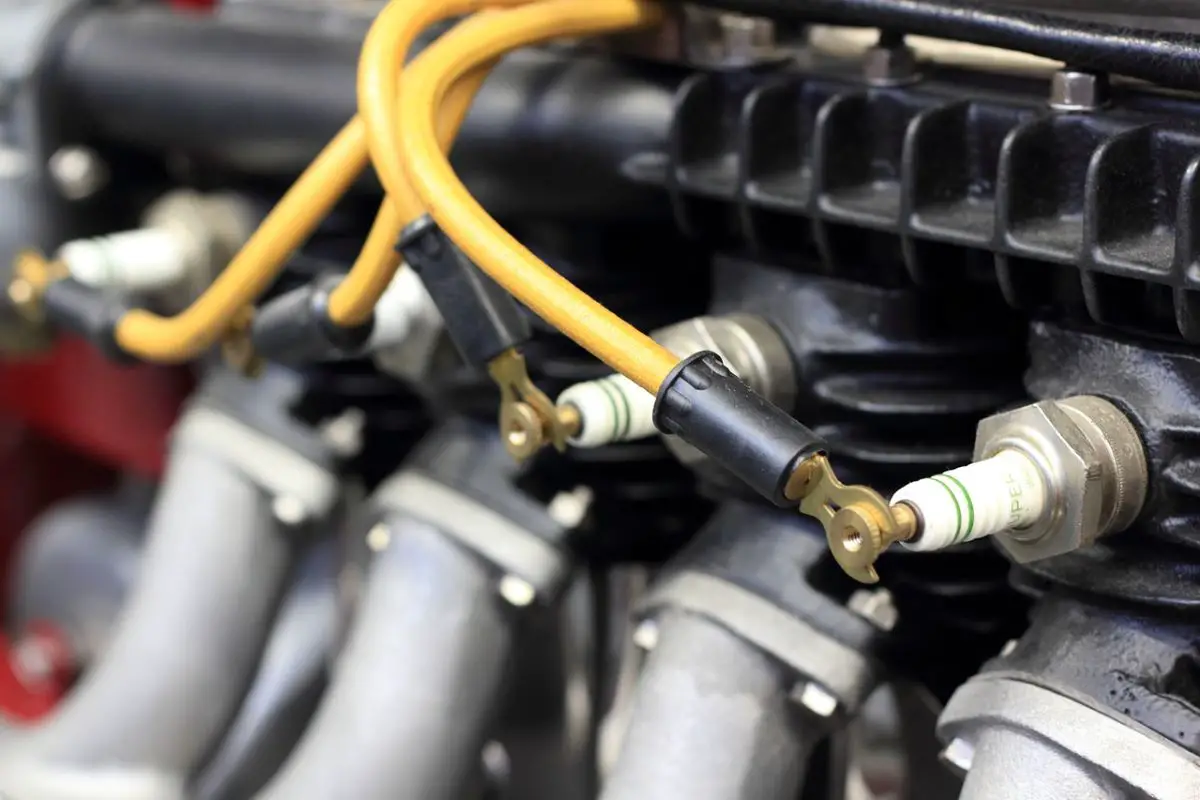Diesel engines and gasoline/petrol engines are both internal combustion engines, which means that they convert energy from the burning of a fuel into mechanical action to drive the vehicle. But their ignition systems are different.
Where gasoline/petrol engines use spark plugs to ignite the fuel, diesel engines rely on the heat generated by compressing the air in the cylinder to spontaneously ignite it instead. This can cause problems if you run a diesel engine on gasoline/petrol since gas burns much more quickly than diesel and doesn’t generate enough heat alone to initiate combustion in a diesel engine.
A diesel engine does not have spark plugs because they do not need them.
What Are Spark Plugs?
Spark plugs are one of the most important components of a car’s engine. They’re like the tiny engines in your car that keep it going. The engine needs fuel and air to run, but it also needs sparks to ignite the fuel. The spark plugs ignite the fuel by sending electric sparks through an electrode into a cylinder, where they create the combustion that keeps your car running strong.
Do Diesel Engines Need Spark Plugs?
Diesel engines don’t need spark plugs. That’s because they’re different from gasoline engines. The combustion process in diesel engines is more controlled and doesn’t need a spark plug to ignite the fuel.
In a gasoline engine, you have a mixture of air and gas inside the cylinder before it ignites. Which is then compressed by the piston. A spark plug makes a small electric spark that ignites the mixture. This then allows the pressure to move the piston down, which turns the crankshaft.
In a diesel engine, the piston compresses air until it gets hot enough to cause a reaction that starts the combustion of the fuel injected into the cylinder. Since there’s already high heat, no ignition source is needed.
This difference also affects how much energy and efficiency you get from your engine. Since diesel engines already use so much air (up to 30 times as much as gasoline), they don’t need as many cylinders to achieve efficient combustion. They can end up with less power than a gasoline engine with similar specifications. However, if you compensate for this by using larger cylinders, this means you can use more power at lower RPMs and get higher fuel efficiency from your diesel engine overall.
What Are Glow Plugs?
Glow plugs are a standard feature in all diesel engines. These plugs look similar to a spark plug, and they are put in place across the cylinder head. These plugs have a heating element that heats the combustion chamber before starting the engine. This ensures that the air in the chamber is hot enough for the diesel fuel to ignite without any issues.
An electric current powers the glow plugs, and it takes only a few seconds to heat up properly. Once this happens, you will see a notification light on your dashboard telling you that it is safe to start your engine.
Starting A Diesel Engine
Starting a diesel engine is very similar to starting a gasoline engine. However, there are some important differences in the process.
First and foremost, the diesel engine relies on compression rather than spark plugs and an ignition system. This means that the fuel will not combust until it reaches a certain level of pressure and temperature. To start a diesel engine, you need to create enough compression and heat in the cylinder so that the piston can force air into the fuel injector.
When you turn the key in your diesel engine’s ignition, several things happen: The starter motor turns over (just as it does with a gasoline engine), which causes the crankshaft to shift up and down in the crankcase. At the same time, fuel is being pumped into the combustion chambers with high-pressure injectors.
As these two processes combine, they cause an increase in temperature and pressure in each cylinder. When these factors reach their threshold, they cause the compressed air-fuel mixture to ignite and create energy, which is then transferred by heat to the crankshaft. This energy causes the crankshaft to turn, which causes your car’s wheels to move forward!
How Do Glow Plugs Operate?
Glow plugs are used to help diesel engines start in cold weather. They operate by heating air in the combustion chambers of the engine. A glow plug is designed to heat up when it receives an electrical current and remain hot until it is cut off.
This is accomplished by using a temperature-sensitive bi-metal strip that opens a set of contacts when it reaches a certain temperature, interrupting the current flow. When the engine cools, the bi-metal strip closes again, completing the circuit and allowing the glow plugs to heat up again.
How Many Glow Plugs Does Your Diesel Engine Have?
The number of glow plugs in your diesel engine depends on the size of your engine. Larger engines have more glow plugs than smaller ones. For example, a six-cylinder engine will have six glow plugs, and an eight-cylinder engine will have eight glow plugs.
Glow plugs help your diesel engine start and get going. This is especially important in cold weather, when the oil is thicker, making it harder to turn over. Each engine has two or three glow plugs.
This is because glow plugs are installed directly into your engine’s cylinder head, and most engines have between two and four cylinders. If you need to replace them, it’s a good idea to change all of them at once so they’ll wear evenly.
How Often Do You Change Diesel Glow Plugs?
Diesel glow plugs are designed to be replaced every 30,000–40,000 miles. However, this number can change depending on the time you drive your vehicle and how often you use the glow plug during cold weather.
Conclusion
Petrol engines generally have spark plugs, but diesel engines use glow plugs. When it comes to the internal combustion engine, diesel and gasoline are two completely different ways of sourcing power. Diesel engines have a lot of power, but they have a big problem. They take time to start, which is not available in today’s fast-paced world. This can be a major issue for anyone who needs quick acceleration.
You May Like These Articles As Well:
What Color Is Transmission Fluid? Everything You Need To Know
Why Is My Blinker Blinking Fast? Troubleshooting This Car Problem
 Being Human
Being Human




